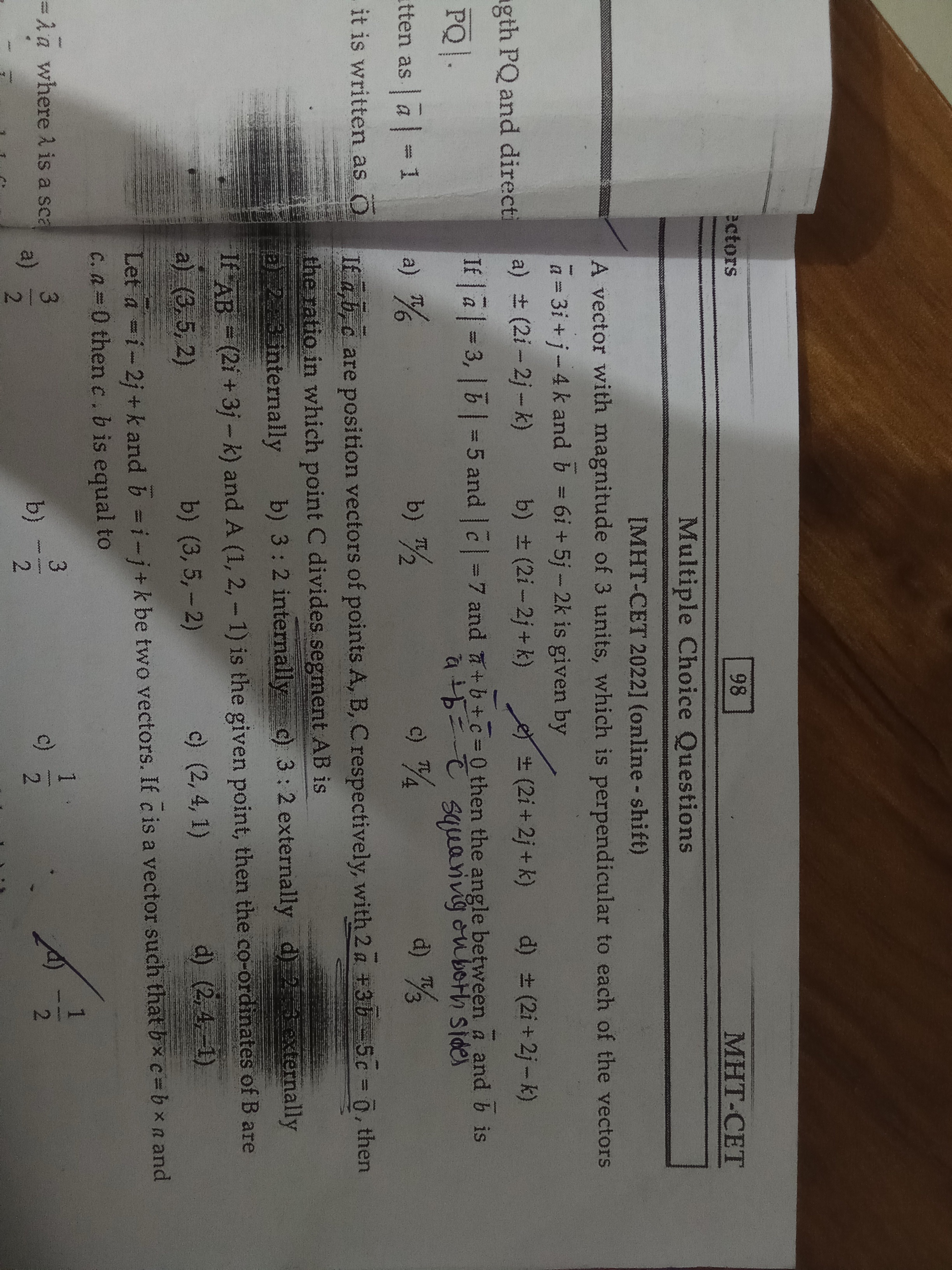Question
Question: A vector with magnitude of 3 units, which is perpendicular to each of the vectors $\vec{a}=3i+j-4k$ ...
A vector with magnitude of 3 units, which is perpendicular to each of the vectors a=3i+j−4k and b=6i+5j−2k is given by

A
±(2i−2j−k)
B
±(2i−2j+k)
C
±(2i+2j+k)
D
±(2i+2j−k)
Answer
±(2i−2j+k)
Explanation
Solution
To find a vector perpendicular to both a and b, we compute their cross product:
a×b=i36j15k−4−2=i(1⋅(−2)−(−4⋅5))−j(3⋅(−2)−(−4⋅6))+k(3⋅5−1⋅6)=18i−18j+9k=9(2i−2j+k)
The resulting vector is proportional to 2i−2j+k.
Now, we need to scale this vector to have a magnitude of 3. The magnitude of 2i−2j+k is:
22+(−2)2+12=4+4+1=9=3
Since the magnitude is already 3, the required vector is ±(2i−2j+k).
